How to map, build, and automate omnichannel customer journeys
Today’s customer journeys are more difficult to track than ever as customers use a plethora of digital and physical touchpoints to interact with brands. At the same time, most marketing teams use tons of disconnected solutions to reach customers and analyze their behavior.
Updated on 10 Oct 2025
This creates leads to a cascade of problems:
- Teams don’t get a clear picture of their customers’ omnichannel experience as data remains siloed off in different tools.
- Their marketing strategy isn’t based on a solid understanding of customers’ preferences, needs, and journeys, leading to poorly targeted campaigns.
- Users don’t receive timely, relevant, and personalized messages at each touchpoint, resulting in poor customer satisfaction, engagement, and conversion rates.
The purpose of omnichannel marketing is to avoid these issues by ensuring a consistent customer journey across all physical and digital channels.
In this guide, you’ll learn how to achieve that by understanding, mapping, and personalizing your customers’ omnichannel journeys. We’ll start by covering the basics of omnichannel customer journeys and move on to practical advice around data analysis, journey orchestration, and personalization.
Omnichannel customer journey 101: Definition, channels, and channels
The term omnichannel customer journey refers to the complete experience customers have with your brand across all touchpoints. This includes their interactions with your physical (e.g., your brick-and-mortar stores and branch offices) and digital (e.g., your website, mobile app, emails, social media, chatbots, and so on) channels.
When done well, omnichannel marketing leads to seamless experiences that nudge customers towards the desired goal — whether that’s buying a product, filling out a form, or booking a service — with relevant and contextual messaging at every turn.
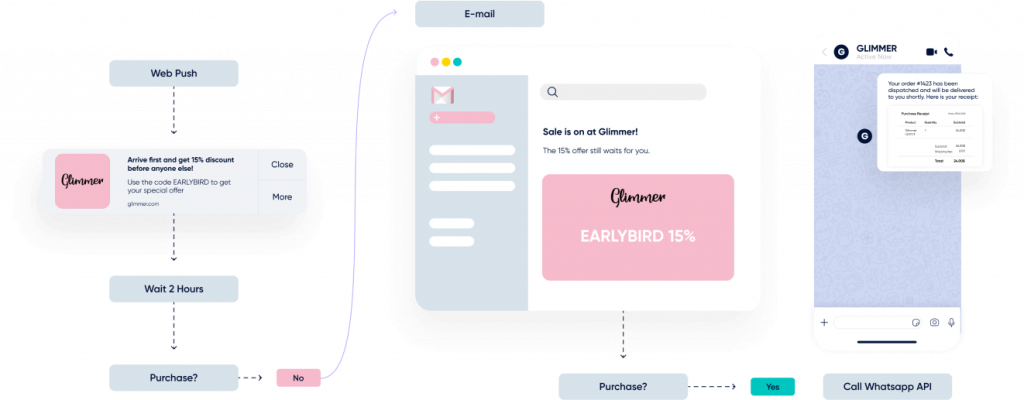
However, in many cases, customers’ experiences across different channels are still disjointed, leading to poor engagement and conversions.
For example, say a customer recently bought a pair of shoes using a brand’s mobile app (or directly from its physical store). Unfortunately, the brand doesn’t have a solid approach to delivering omnichannel customer experiences, so it continually targets the customer with online ads, push notifications, and on-site recommendations that promote those same shoes. Besides lowering engagement and annoying customers, this approach costs the company time and money that could’ve been spent on much more targeted offers.
In the next sections, you’ll learn how to avoid these types of issues and maximize each customer interaction using contextual, personalized, and automated omnichannel campaigns.
How to create personalized and automated omnichannel customer journeys
The steps you need to take to ensure consistent journeys across channels will vary depending on your organization’s size and experience with omnichannel marketing.
Based on our experience of working with over 1200+ leading brands, there are three essential elements for delivering personalized, high-converting omnichannel journeys:
- Data analysis and journey mapping.
- Journey orchestration and automation.
- Omnichannel personalization at scale.
Step 1: Data analysis and journey mapping
The omnichannel approach to marketing is data-driven and based on reliable insight into your customers’ behaviors. This means the only way to successfully nurture leads and customers across their complex journeys is to first understand how they interact with your brand across touchpoints.
This is a massive challenge for many companies, as their customer data is locked in different systems. For example, today’s marketing teams use a plethora of solutions in their day-to-day, including:
- Analytics platforms.
- Website personalization solutions.
- Content management systems (CMSs)
- Customer relationship management systems (CRMs)
- Email and SMS marketing tools (plus other channel-specific solutions).
- And more.
This creates data silos, which prevent marketers from getting a complete, clear view of their customers’ journeys without investing tons of time, effort, and engineering hours.
That’s why a very useful first step to understanding your customers’ experiences is to unify your data with a customer data platform (CDP).
CDPs are built to solve this issue specifically, as they can aggregate customer data from different sources into a single convenient database. They can also resolve omnichannel identities to create clear, detailed, and actionable 360-degree customer profiles.
For example, Insider’s CDP can unify data from any online and offline source, including CMSs, CRMs, APIs, PoS devices, analytics tools, automation platforms, channel-specific tools, and much more. It also gives you detailed views of each customer with crucial information, like:
- Demographics.
- Channel reachability.
- Last purchased, visited, and abandoned products.
- Predictive characteristics, like likelihood to purchase or engage on a channel.
- All in-person and digital interactions with your brand (e.g., in-store purchases, contact center calls, survey responses, website actions, and much more)
- And much more.
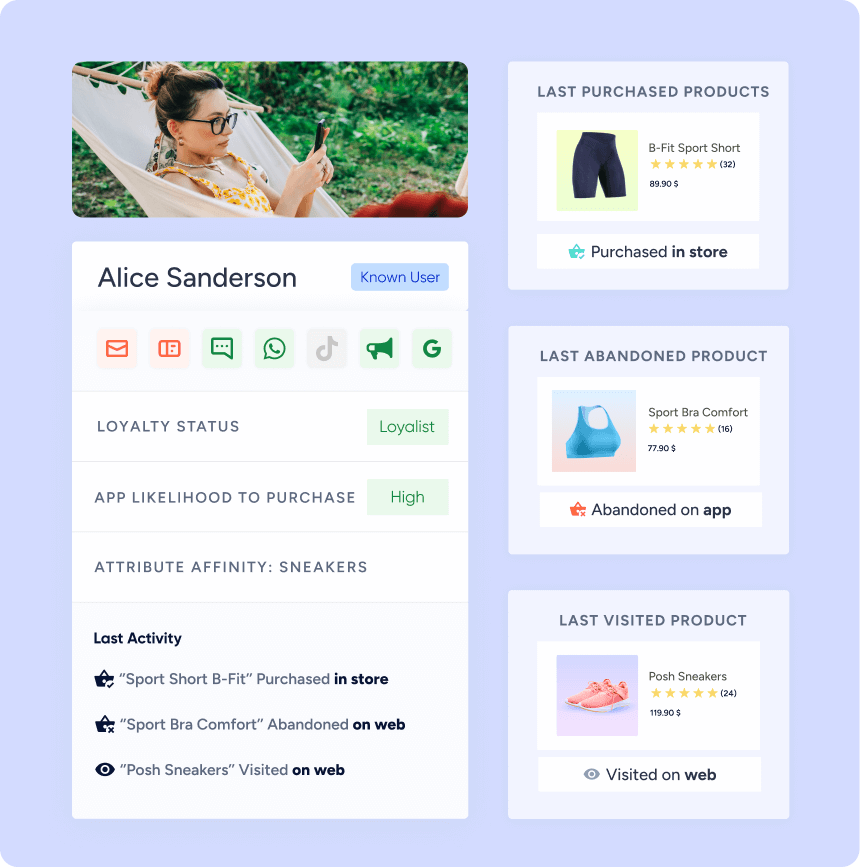
These unified profiles can serve as a solid foundation for your omnichannel marketing efforts. Once your data is unified, you can be confident that all analyses you perform are based on all the available real-time information you have for your customers and their interactions with your brand.
From here, you can begin analyzing customer behavior in terms of important goals, events, and much more. For example, Insider offers a comprehensive suite of behavior analytics tools to do that, including:
- Funnels: Depending on your website’s key conversions (e.g., purchases, form fills, event bookings, and so on), you can build customized funnels that show you how users navigate the path to those goals. This is a great way to find points of friction that may be affecting your conversion rates.
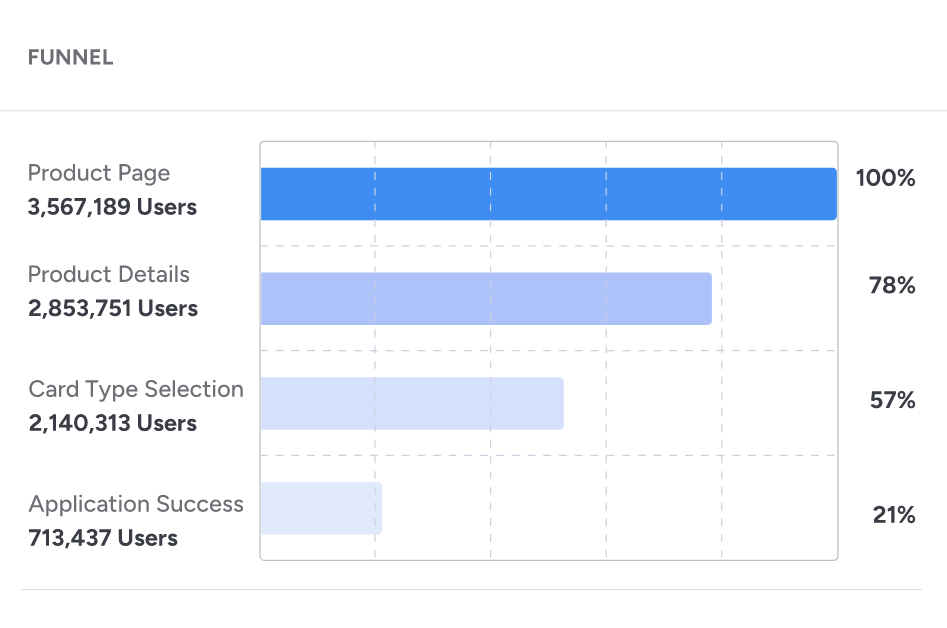
- Message frequency analytics: You can use this tool to analyze how different segments (e.g., new customers) respond to your omnichannel communications. It’s especially useful for determining the optimal message frequency per channel and allocating your budget accordingly.
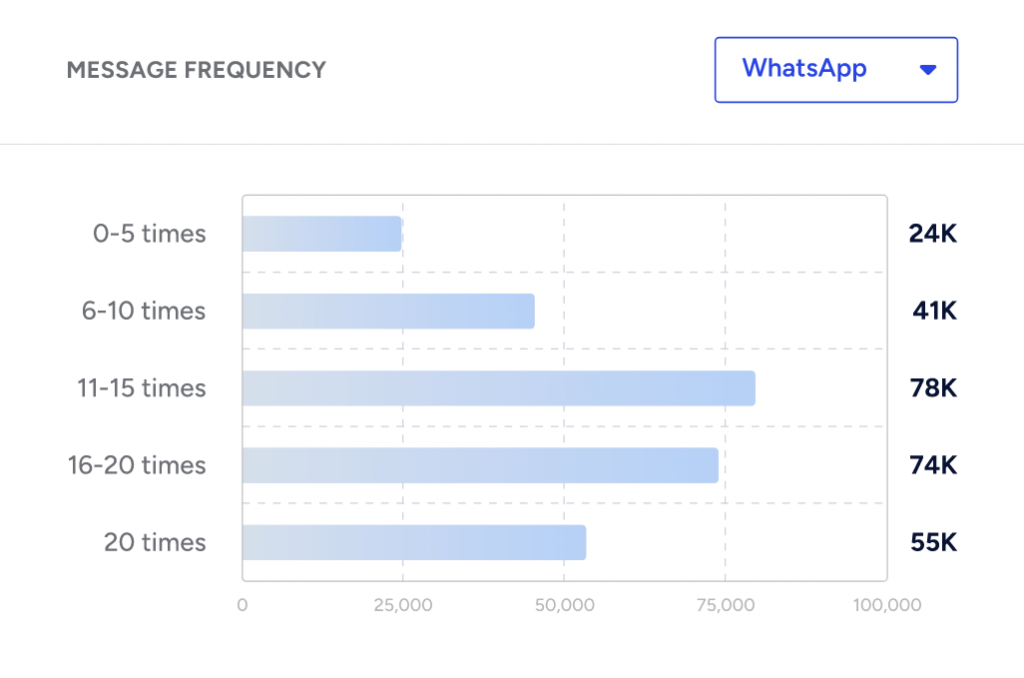
- Purchase behavior analytics: You can uncover key purchase metrics, granular insights, and behavioral patterns of important customer segments. For example, you can see which products VIP customers buy the most, how much revenue each one has generated, their average order value (AOV), and other key metrics.
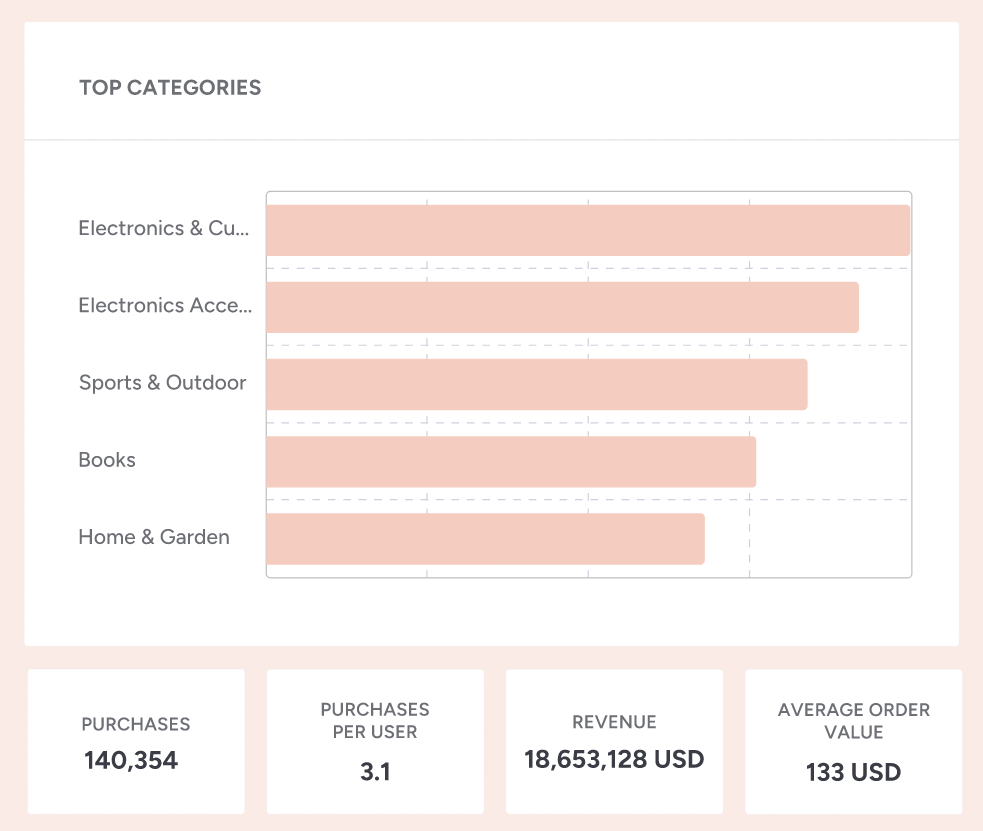
Lastly, if you’re already running omnichannel campaigns, you have a dedicated analytics panel where you can track their results. You can analyze how each campaign performed, see the total number of clicks and conversions, the revenue it generated, and much more.
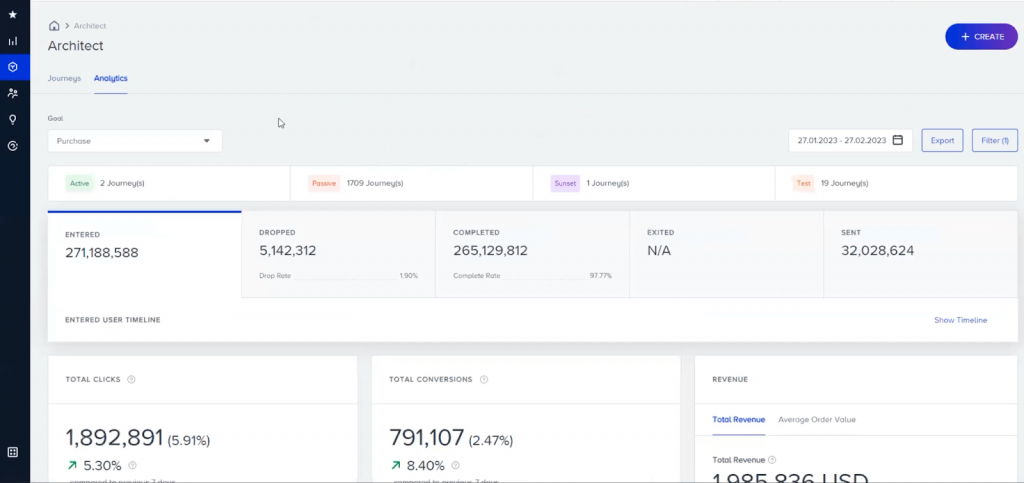
You can also dive deeper into each channel or step of your campaigns to understand its contribution to the overall results. Put simply, you have everything needed to analyze your customers’ omnichannel journeys in detail.
The final useful tip we can provide for this stage is to create a customer journey map for important segments. Journey mapping is a well-known method for visualizing the process people go through to accomplish their goals.
Most journey maps, like the one shown below, cover a few essential elements, like actor, scenario, customer expectations, pain points, journey phases, actions, and opportunities.
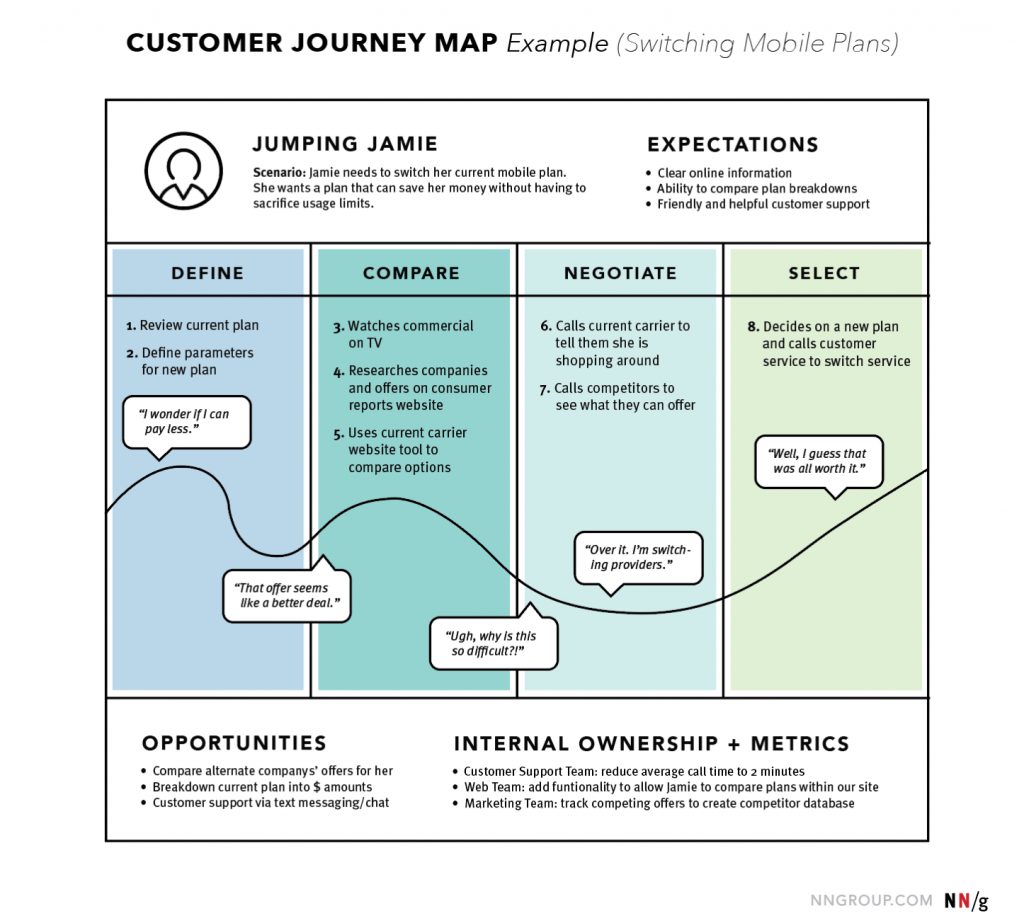
If you’re interested in how to build such maps and why they’re so beneficial, check out Journey Mapping 101 by the Nielsen Norman Group.
Step 2: Journey orchestration and automation
With the difficult task of analyzing your customers’ omnichannel experience out of the way, you can begin creating consistent journeys for them. This process is called journey orchestration and it requires a versatile customer journey builder.
For example, Insider offers an omnichannel customer journey builder called Architect. With it, you can use a simple drag-and-drop editor for all sorts of omnichannel use cases — from simple email welcome flows to complex omnichannel campaigns that span across channels and evolve depending on customers’ behaviors.
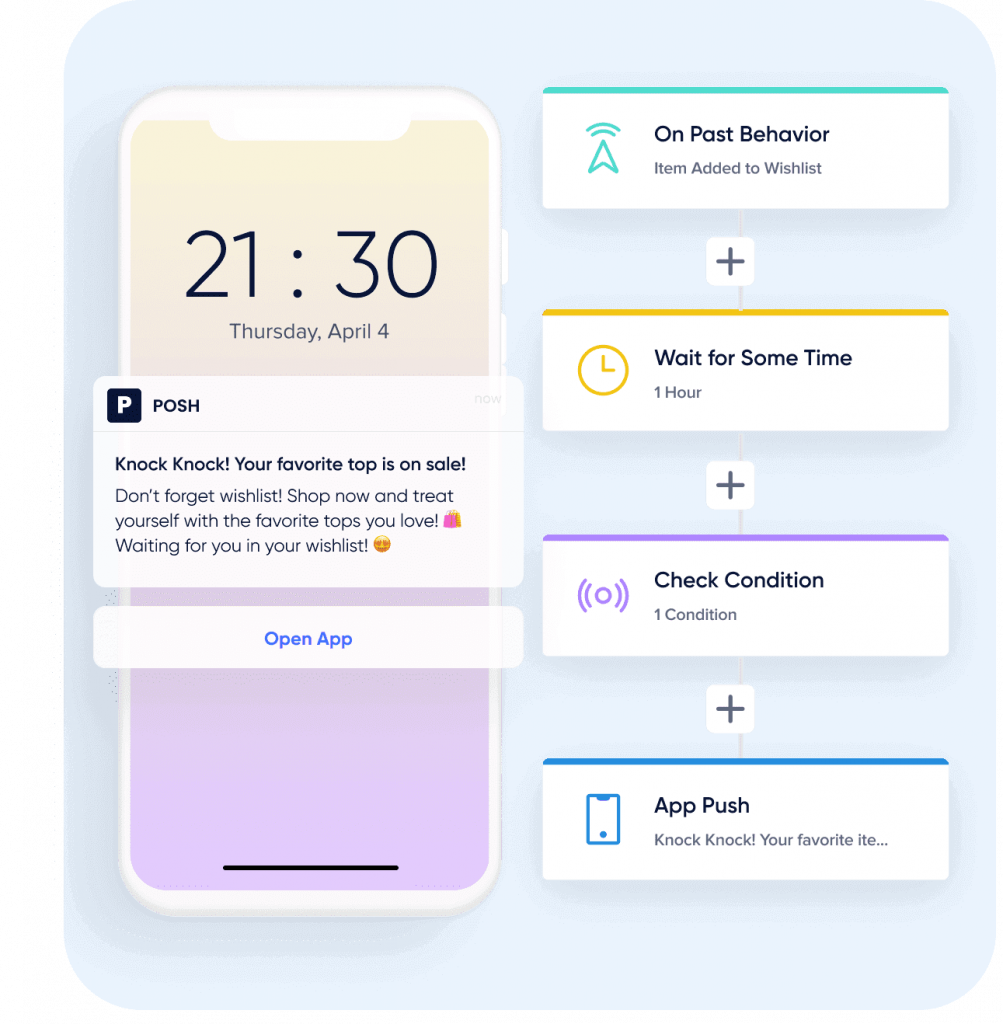
You have complete control over each step of your omnichannel campaigns. For example, you can select the channels, choose when each message gets triggered, set conditions that need to be met before a message can be sent, and much more.
Plus, you can analyze the results right inside the journey builder by zooming into different steps and tracking key metrics like clicks, drop-offs, revenue, and so on.
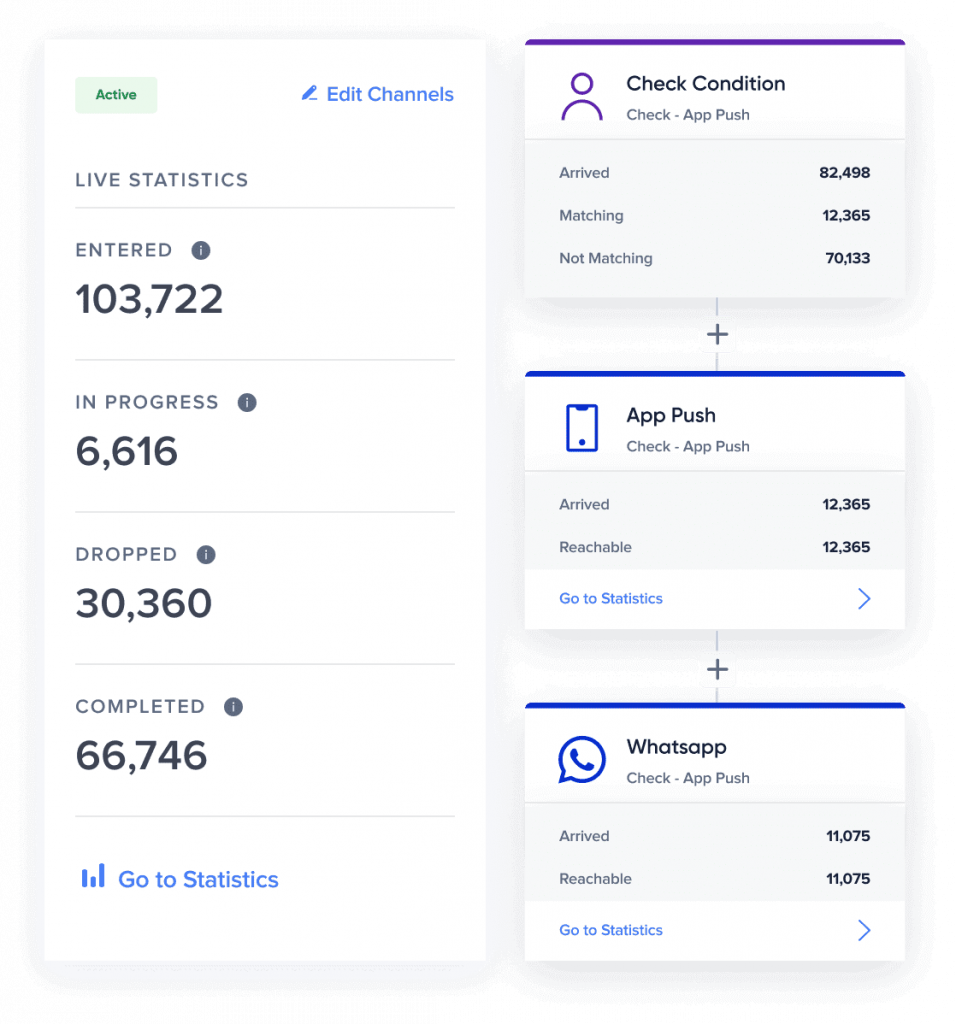
You can also leverage various AI-powered features that can save you lots of time and resources when building and optimizing your omnichannel campaigns, including:
- Send-Time Optimization: This feature analyzes each recipient’s behavior to determine when they’re most likely to engage with your messages. Enabling it is a great way to ensure your messages are always triggered at the optimal time.
- Next-Best Channel Predictions: This feature also analyzes customers’ behavioral patterns to uncover which channels they prefer. It’s incredibly useful when you don’t know how to start or continue an omnichannel journey beyond a certain point.
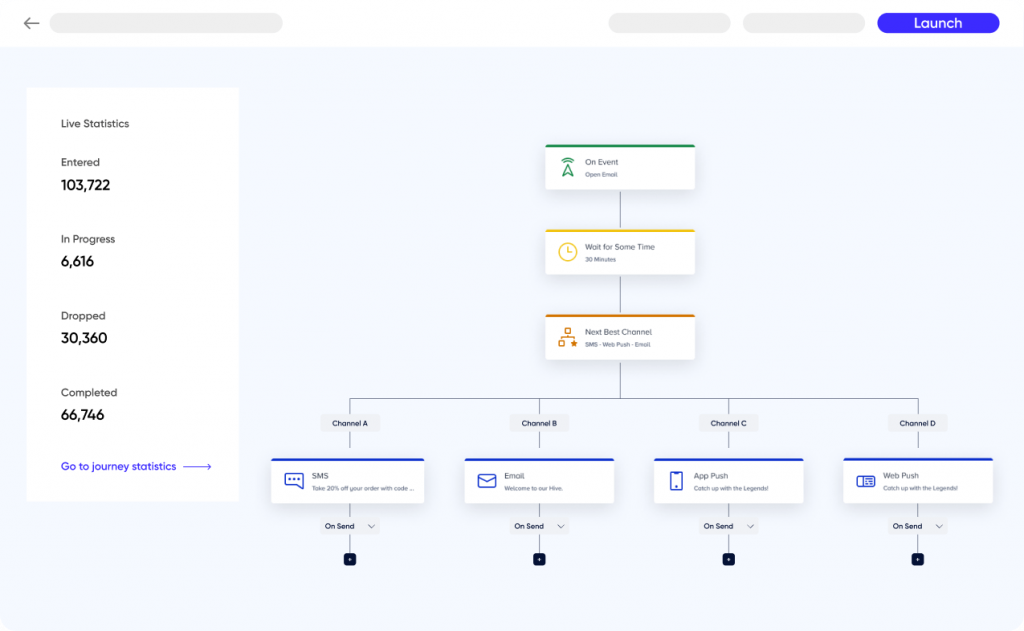
- AI segment, journey, and content creation: Insider’s comprehensive generative AI suite (Sirius AI™) can create customer segments, omnichannel journeys, and campaign content for you using simple text prompts. All you have to do is provide your end goal — like driving sales, increasing leads, or improving customer retention — and our platform will do the rest.
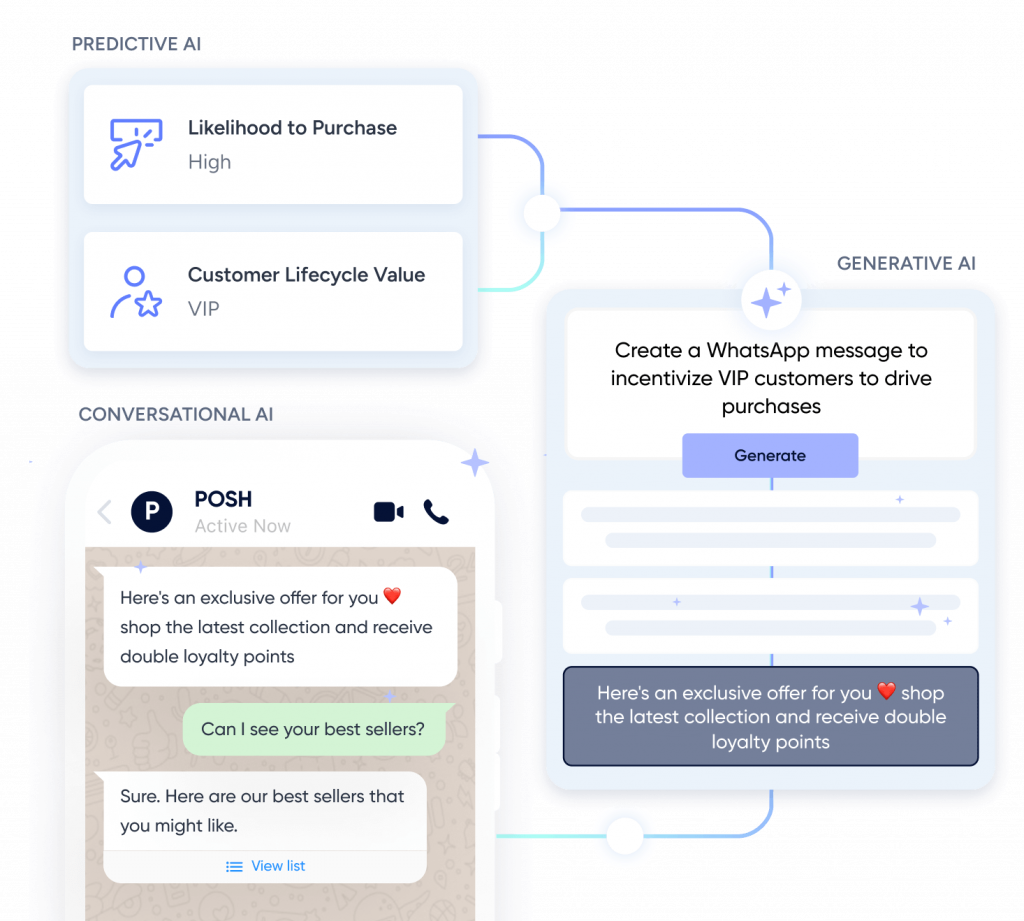
As you can see, Architect is extremely versatile when it comes to building and automating different types of omnichannel journeys. Here are three real-life examples of how marketing teams have used it to deliver consistent user experiences and achieve key organizational goals:
- NA-KD: This fast-growing fashion brand used Insider to unify its customer data and orchestrate personalized journeys across their website, mobile app, push notifications email, and SMS. This helped them increase customer lifetime value (CLTV) by 25% and achieve a 72x ROI in 12 months.
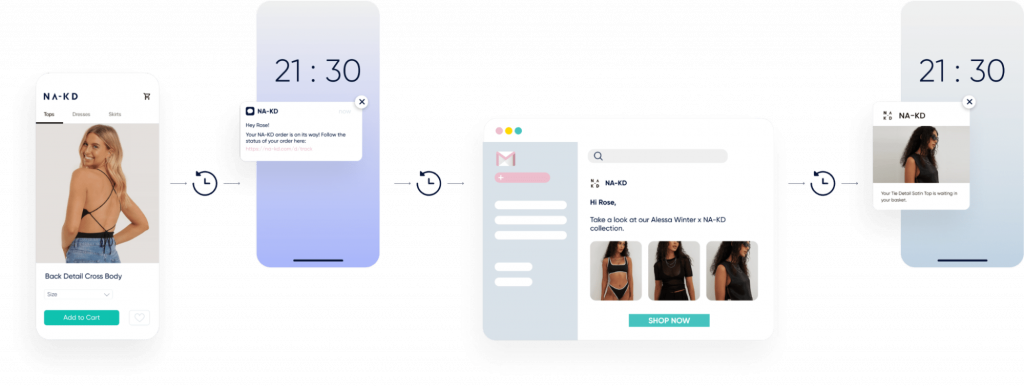
2. Chow Sang Sang: This jewelry brand used Insider to create more consistent journeys across their website and email communications. With our solution, their team was able to source product recommendations based on the interests displayed by their customers and promote them in their emails with just one click. This led to a conversion rate of uplift of 23.5% and a 59% boost in average session duration.
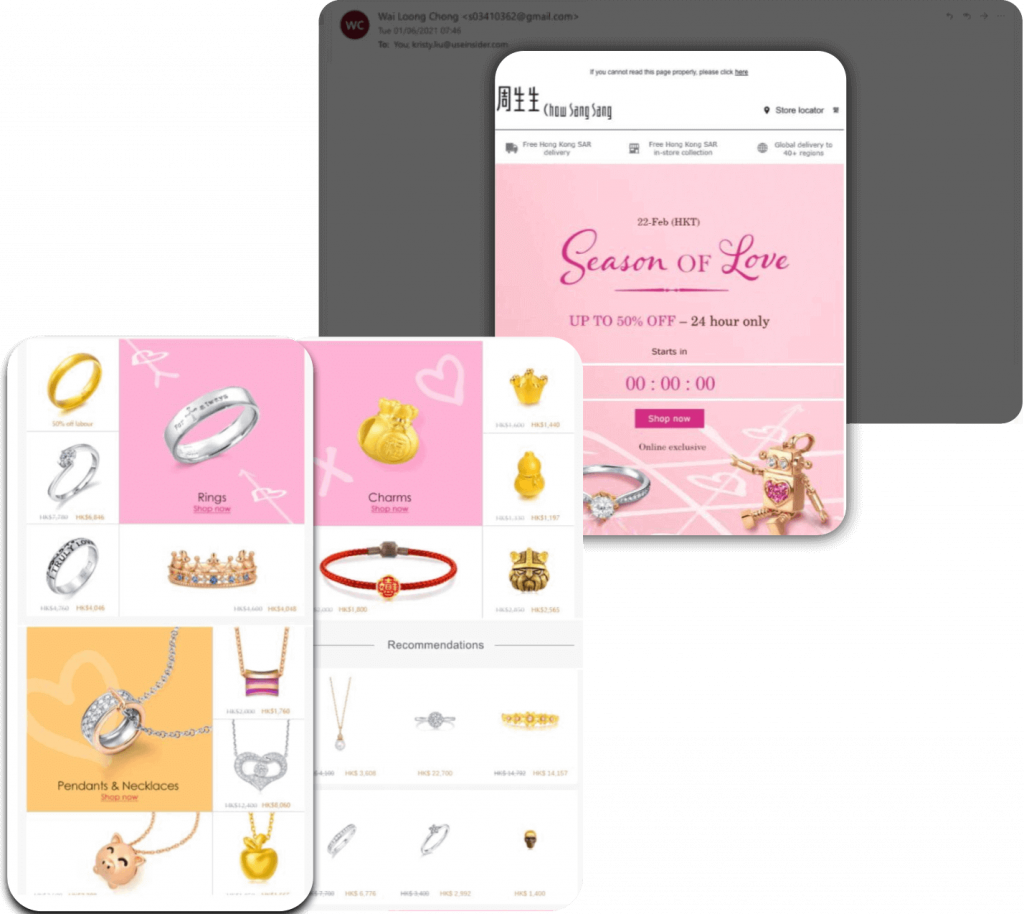
3. Generali: This leading financial services company used Insider to deliver an engaging and consistent experience across their website and build a bespoke omnichannel lead validation journey. The journey spanned across the company’s website, email communications, push notifications, and SMS messages. With Insider, Generali saw a 3x increase in leads and a 20% reduction in sales cycle length.
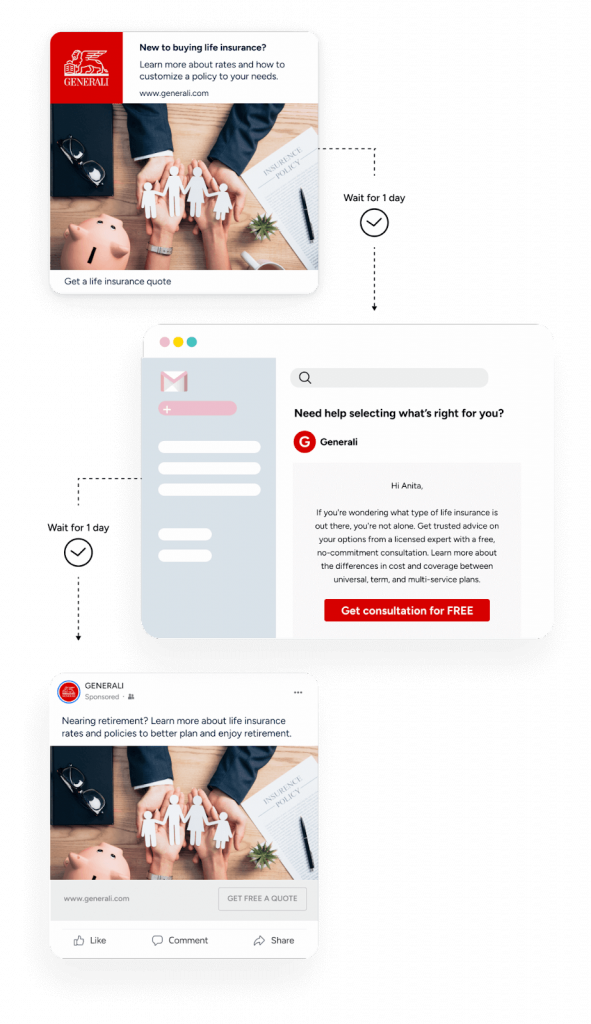
For even more ideas and examples, check out our guides to:
Step 3: Omnichannel personalization at scale
Besides orchestrating contextual journeys, a complete omnichannel experience requires each customer touchpoint to be personalized.
This is just as important as optimal send times and smart channel selection, as it ensures you’re making the most out of every interaction. Insider is an advanced personalization solution that’s built to do exactly that.
You can use our platform to deliver a completely personalized experience across your:
- Website and mobile app. Insider’s personalization engine can tailor every element of your site and mobile app, including banners, categories, search results, and product recommendations. For example, Adidas used Insider’s personalized product recommendations to increase homepage conversion rates by 13% and product page conversion rates by 7%.
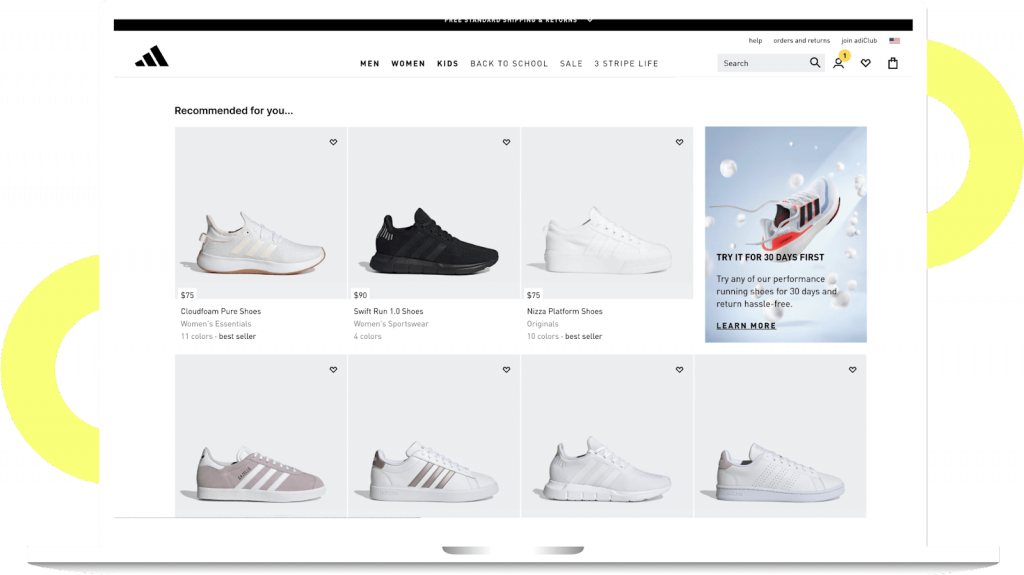
- Emails. Insider makes it simple to build personalized emails (or entire campaigns) that include customers’ names, birthdays, last purchased or visited products, individualized product recommendations based on their behaviors, and much more. For example, Matahari used Insider’s personalization functionalities to tailor their emails based on customers’ needs and interests, leading to a 328% increase in open rates.
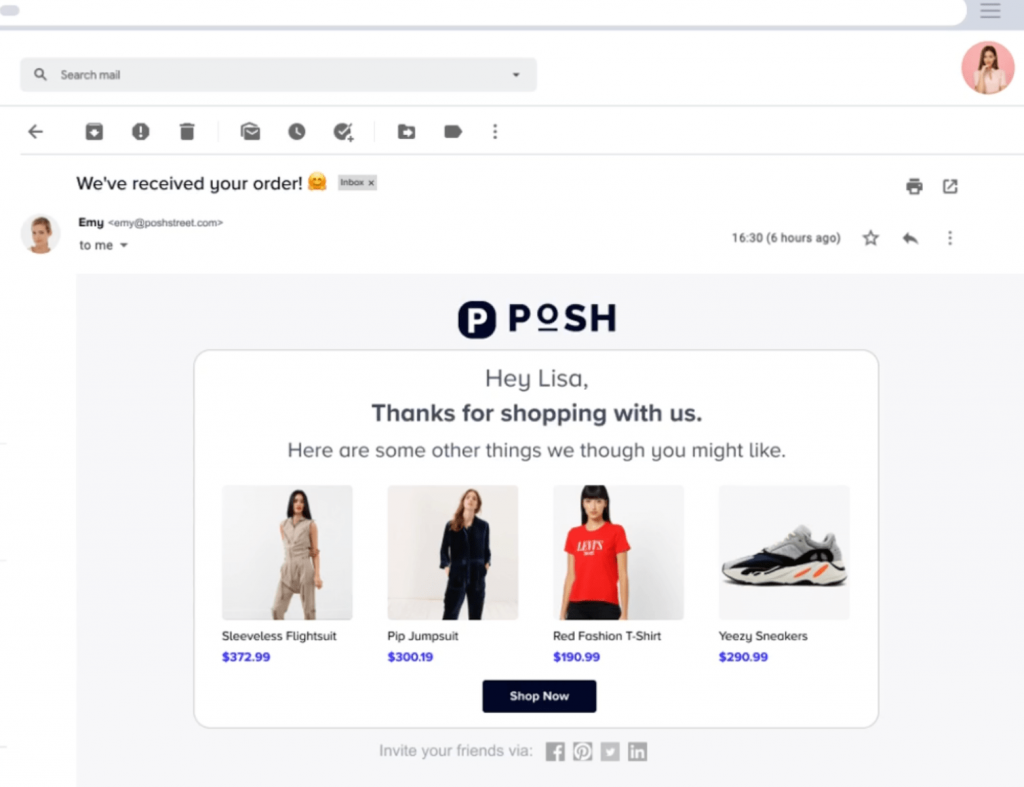
- Push notifications. You can use a variety of different web and mobile app push notification types to promote products, target customers based on their locations, recover abandoned carts, and much more. For example, Marks & Spencer used Insider’s personalized web push notifications to achieve a 15.1% cart recovery rate, which is 353x higher than the industry average.

- Messaging channels. Insider let’s use a plethora of messaging channels — including SMS, WhatsApp, and Facebook Messenger — to send personalized promo messages, price drop alerts, event reminders, and much more. For example, Vogacloset used Insider to tap into WhatsApp as a new communication channel, which helped them increase conversion rates and achieve a 30x ROI.
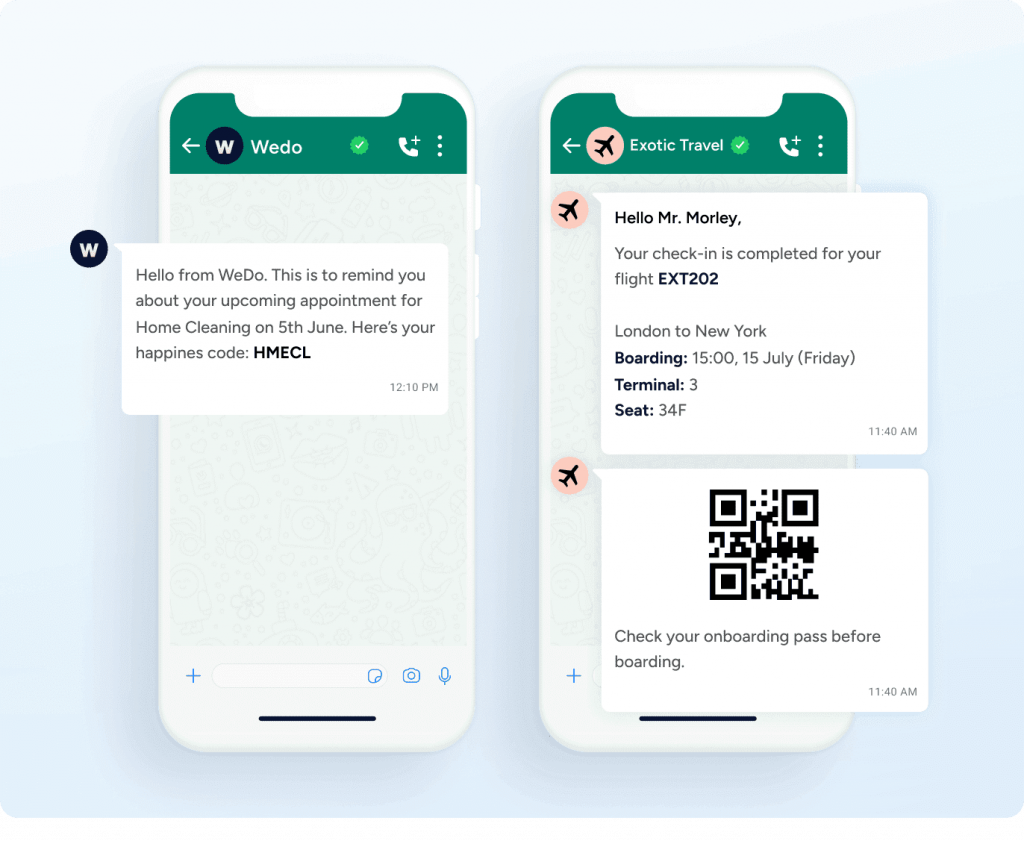
Besides these channels, you can also use Insider to deliver highly relevant ads across Google, Facebook, Instagram, and TikTok. For a deeper dive into this topic, check out our guide to achieving personalization at scale.
Take your omnichannel marketing to the next level with Insider
Insider can help you analyze your customers’ omnichannel experience and build personalized, automated, and highly effective campaigns across their preferred touchpoints — from your channel and mobile app to email, push notifications, SMS, WhatsApp, and more.
Our omnichannel customer engagement platform can:
- Aggregate your customer data from all online and offline sources into a central database.
- Create detailed 360-degree profiles of your customers and reveal their behaviors, interests, and preferred touchpoints.
- Automate lots of difficult tasks around omnichannel personalization and campaign creation, such as choosing the right channels and moments to engage customers.
- Predict future customer behaviors, like how much they’re projected to spend and how likely they are to buy or engage with your brand on a specific channel.
- Create end-to-end personalized customer experiences across all channels and at scale.
Finally, our easy channel integrations, experienced customer support team, and versatile templates will help you implement a successful omnichannel strategy as fast as possible.
Schedule a demo with our team to learn how Insider can benefit your business specifically.



















